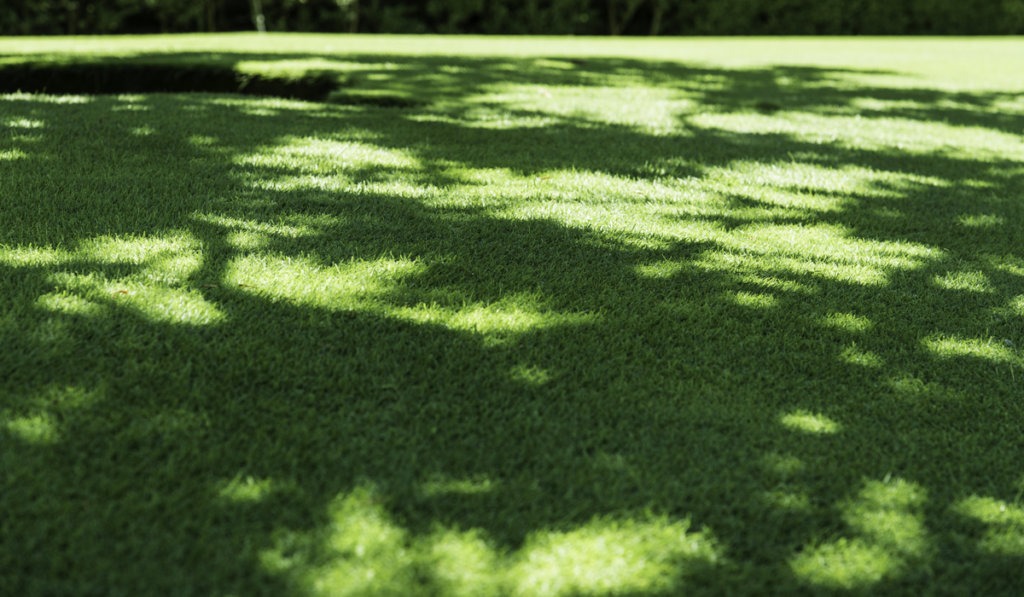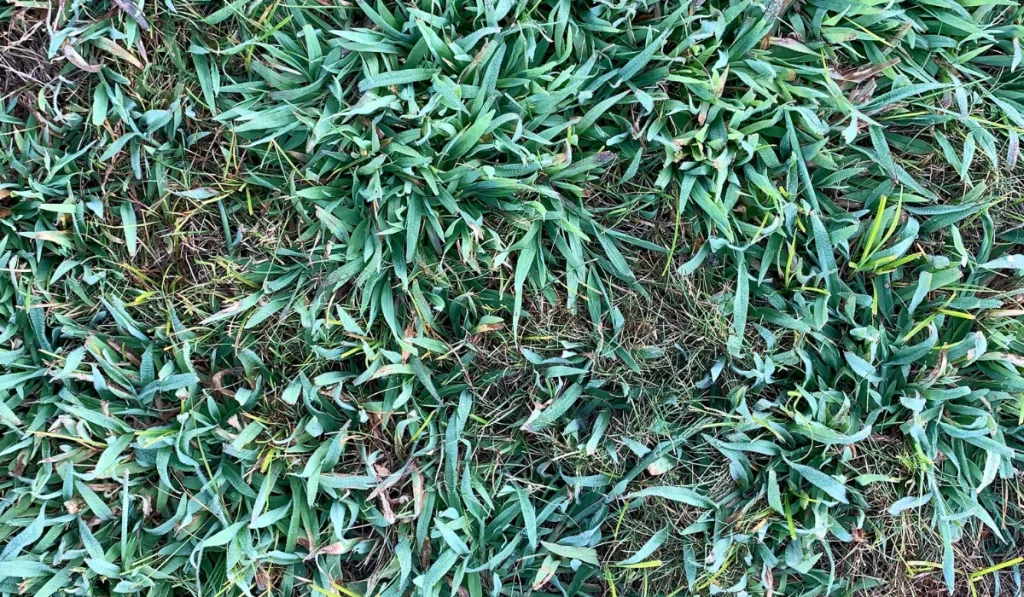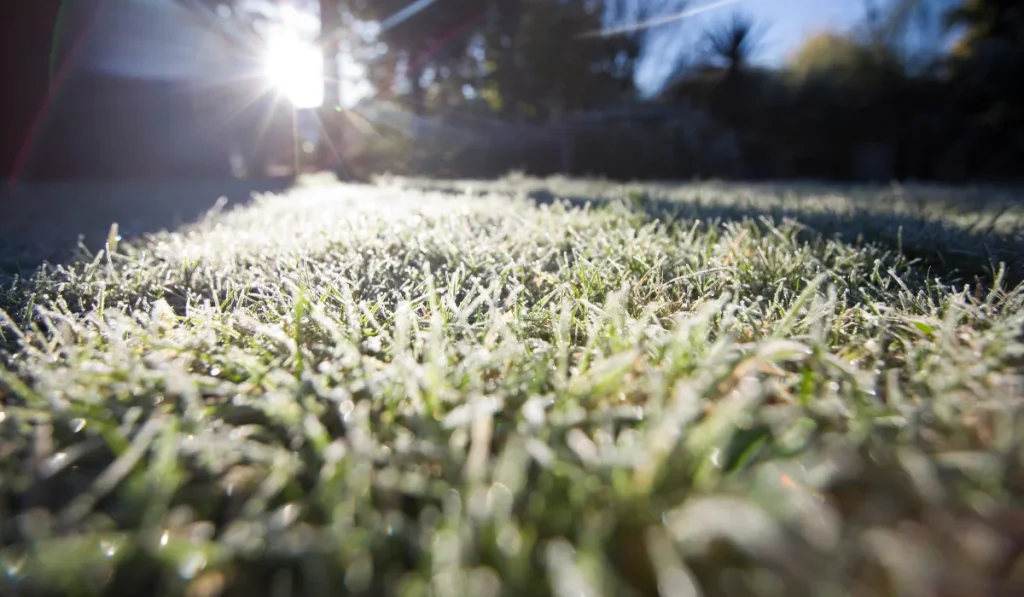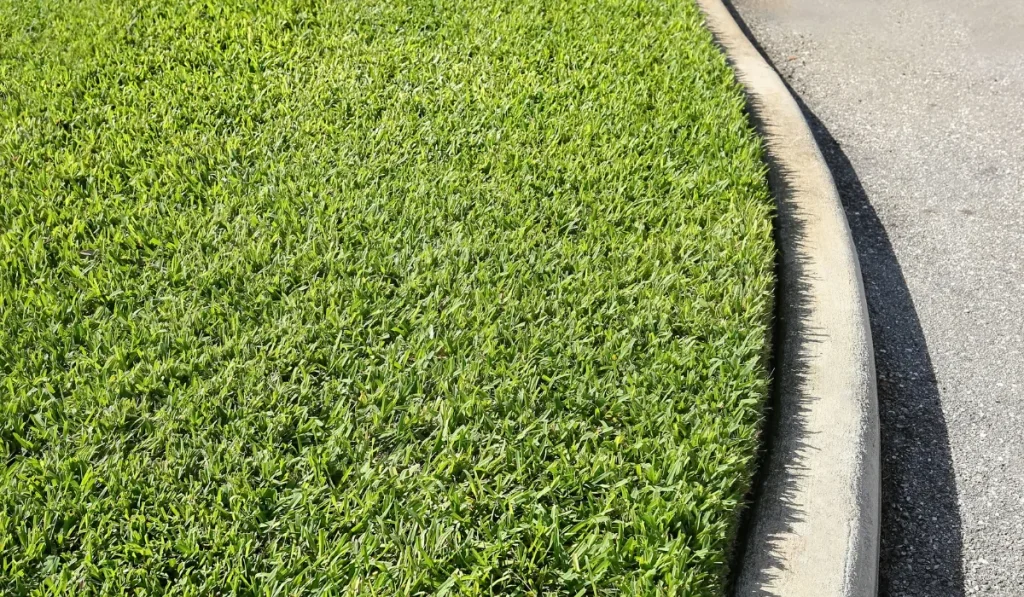If there are sections of your lawn that rarely see the light of day, don’t worry – not all hope is lost. You don’t have to resign yourself to a lawn just of sand. Fortunately, there is grass that grows in shade.
Although people often think of grass as a plant that needs direct sunlight in order to grow, there are many types of grass that can prosper in shady areas.
In fact, if you have a shady spot in your yard, using the right type of grass can make it look much more attractive. Here is some information on the many different kinds of grass that grow well in shade.
Key Takeaways
- If you’re looking for warm-season grass to grow in the shade, zoysiagrass is one of the best.
- Fescue, bluegrass, and ryegrass are all good choices for cool-season options in the dense shade.
- Regardless of the type of grass you choose, make sure you are watering, fertilizing, and aerating on a regular basis.
Will Any Grass Grow in Heavy Shade?
Not all grass types grow well in heavy shade. If you have a shady lawn, consider growing one of the following:
- St. Augustine grass
- Centipede grass
- Zoysiagrass
- Fescue
- Bluegrass
- Ryegrass
- Tall or ornamental grasses
We’ll go into greater detail about the benefits of each below, but here’s a quick breakdown of the properties of each so that you can make an educated decision.
| St. Augustine Grass | Centipede Grass | Zoysiagrass | Fescue | Bluegrass | Ryegrass | Tall/Ornamental Grasses | |
|---|---|---|---|---|---|---|---|
| Shade Tolerance | Moderate to High | Moderate | Moderate to High | Moderate | Moderate | Moderate | High |
| Mowing Height | 2.5-3” | 1.5-2.0” | 0.5-2.0” | 3.5-4” | 2.5-3.5” | 1.5-3” | N/A |
| Drought Tolerance | Moderate | Moderate | Moderate | High | Moderate | Low | Varies |
| Wear Tolerance | Low | Low | High | Moderate to High | Moderate | High | Low |
What Grass Grows Best in the Shade?
If you’re frustrated when trying to grow a lawn in the shade, the most common problem is likely that you’re simply not choosing the right type of lawn grass. Here are some of the best grass types to grow for shady lawns.
1. St. Augustine Grass
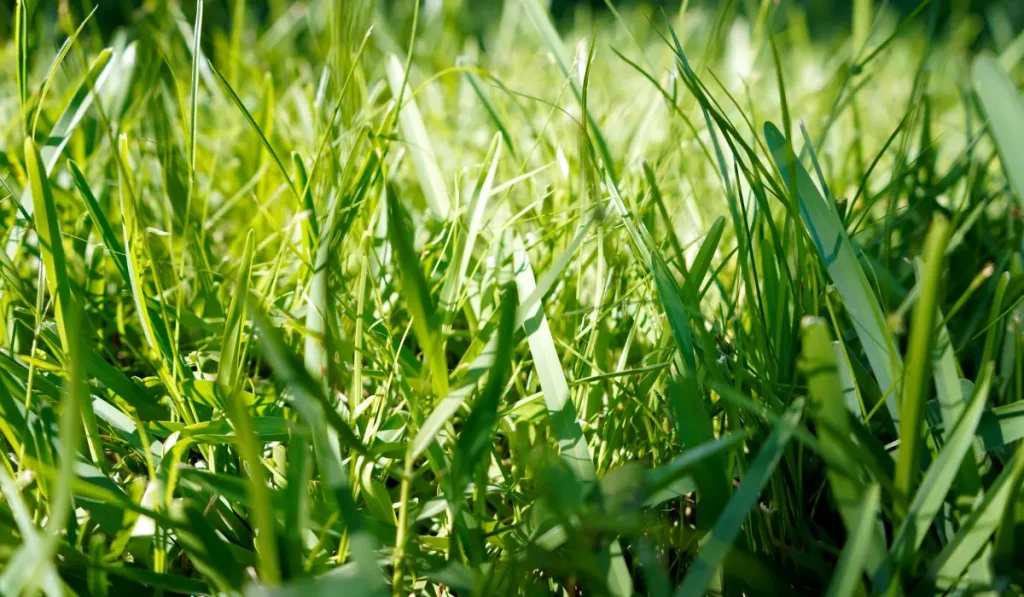
St. Augustine is a warm-season grass that does quite well in partially shaded areas. Certain cultivars do better than others – the best include ‘Palmetto,’ ‘Seville,’ ‘Bitter Blue,’ and ‘Sapphire.’
As a general rule, about 4-5 hours of sunlight per day is all these cultivars need. You’ll know they’re not getting enough if the growth starts looking thin or your lawn is suddenly plagued by disease.
2. Centipede Grass
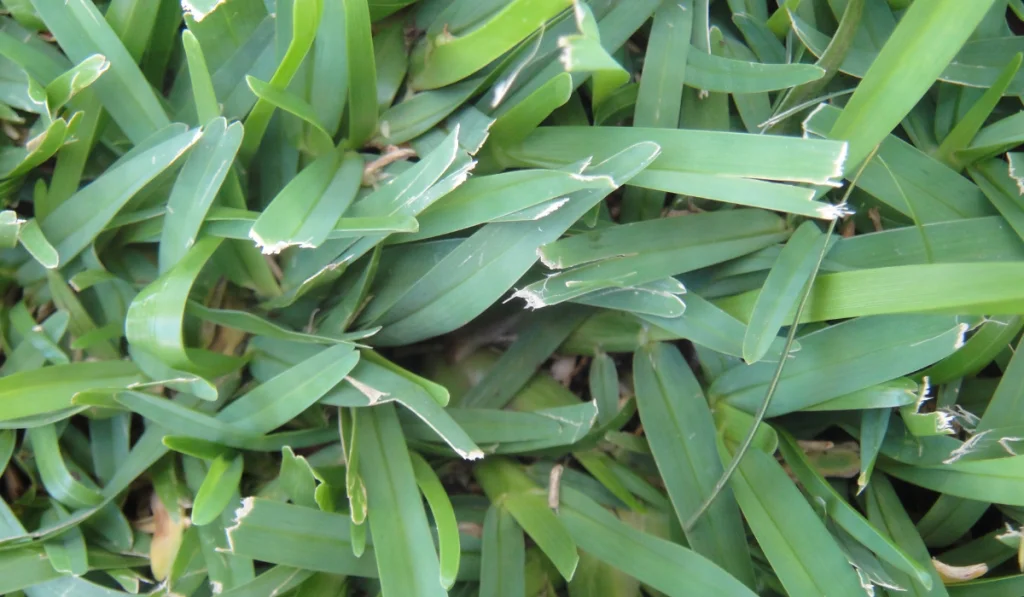
Out of all the grass types on this list, centipede grass, unfortunately, tends to require the most sun. It needs about six hours of partial sun per day, so while it can handle a shadier environment, you’ll want to map your sun exposure before you plant this species to make sure you can give it what it needs.
3. Zoysiagrass
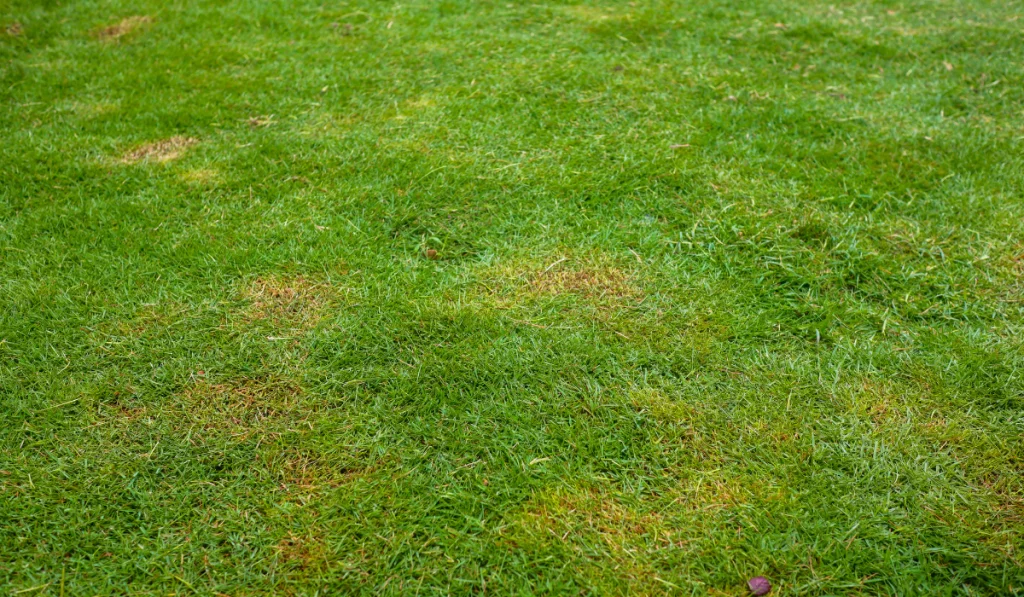
Zoysiagrass is another shade-tolerant warm-season pick. It technically does prefer sun, but will begrudgingly handle some shade if you have it!
A prime choice for subtropical climates, this grass species likes a lot of heat and humidity. That said, it only needs about 3 to 4 hours of direct sunlight per day, making it a good choice for areas near tall buildings or trees that cast a fair amount of shade but only at certain times of the day.
Again, pay close attention to the cultivar you select. Some good options for the shad include ‘Geo Zoysia’ and ‘Zeon.’ Those like ‘Emerald Zoysia’ aren’t as well-suited to the shade because they grow slowly and are easily choked out by more aggressive weeds, like crabgrass.
4. Fescue
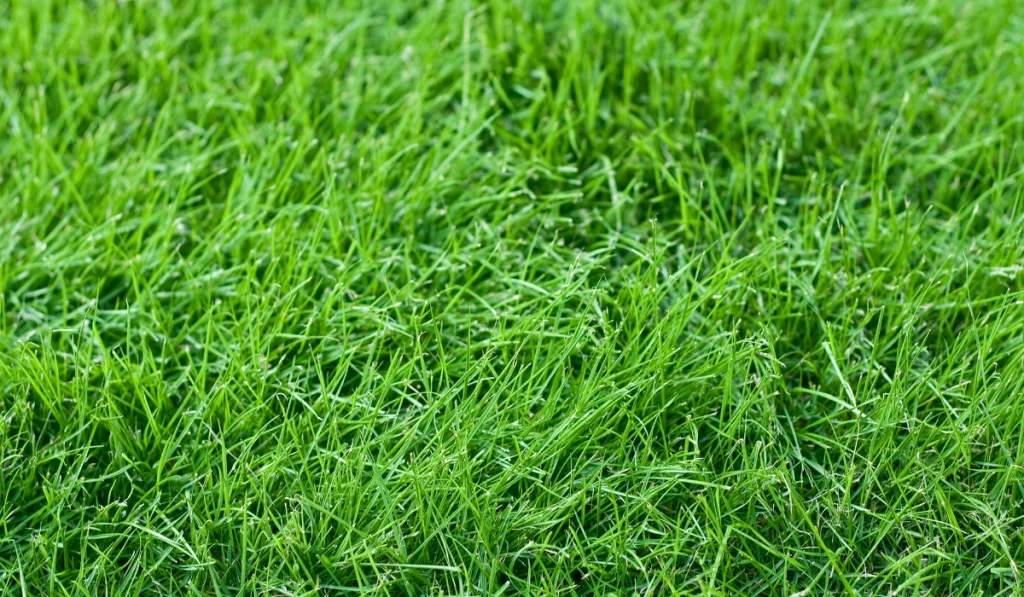
Fescue is another good choice – especially if you’re looking for cool season grass. All varieties of fescue, including red fescue, fine fescue, hard fescue, tall fescue, and Chewings fescue, do quite well in much shade.
This species really only needs about four hours of dappled sunlight per day. This is due primarily to the deep grass roots that retain energy well. Though fescue grows slowly, it’s a real champ when it comes to staying green in the partial shade.
5. Bluegrass
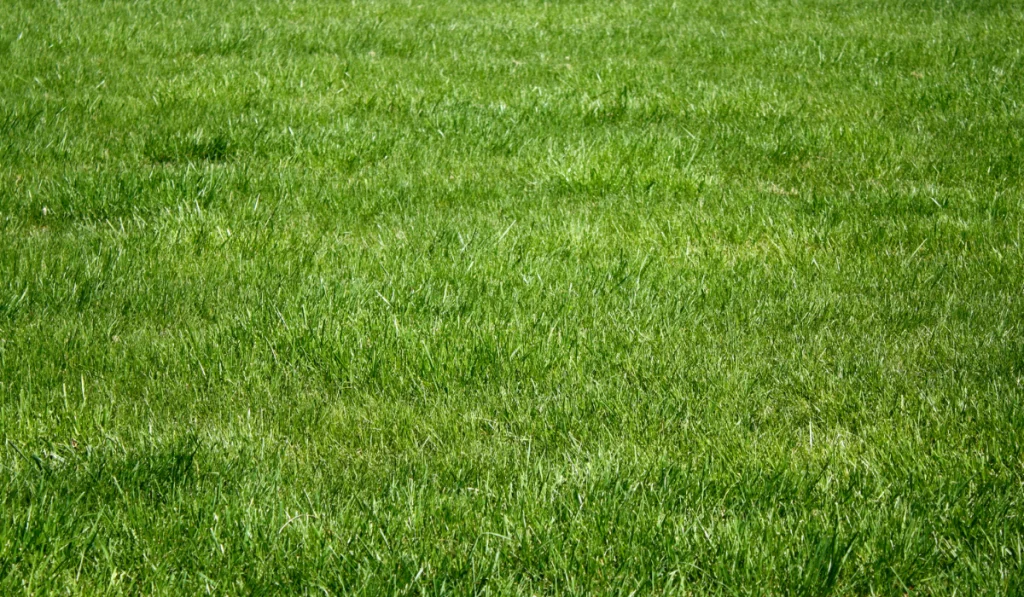
Rough bluegrass is another cool-season kind of grass to consider for a shady lawn. It thrives with just 4-5 of direct sun per day.
The downside of this species is that it doesn’t hold up well to intense summer heat – again, it’s a cool-season grass. In the summer, you may find that sections of the lawn die off, leaving bare spots behind.
Other types of bluegrass perform well in the shade, too, but rough bluegrass tends to be the best. In addition to shade, it also handles cooler temperatures and moist conditions with ease.
6. Ryegrass
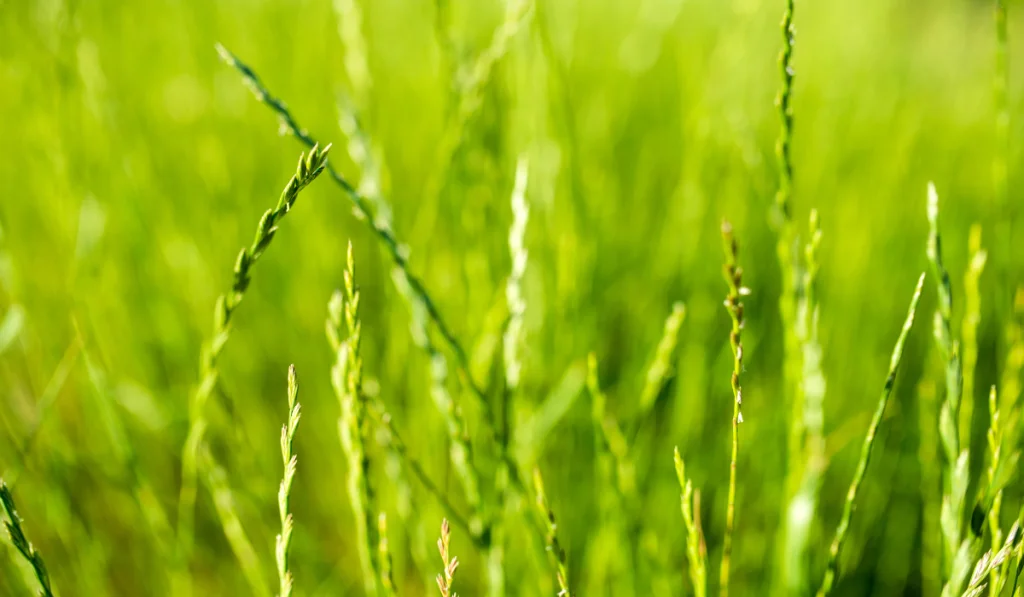
Perennial ryegrass is one more cool-season option that handles the shade well. It really only needs four hours of sunlight per day. Just note that this sunlight should be direct sunlight for best results – it doesn’t hold up well to dappled light.
Don’t plant ryegrass if you experience summer temperatures that regularly rise above 90 degrees. It does best when soil conditions and temperatures remain somewhere between 70 to 80 degrees Fahrenheit.
7. Tall or Ornamental Grasses
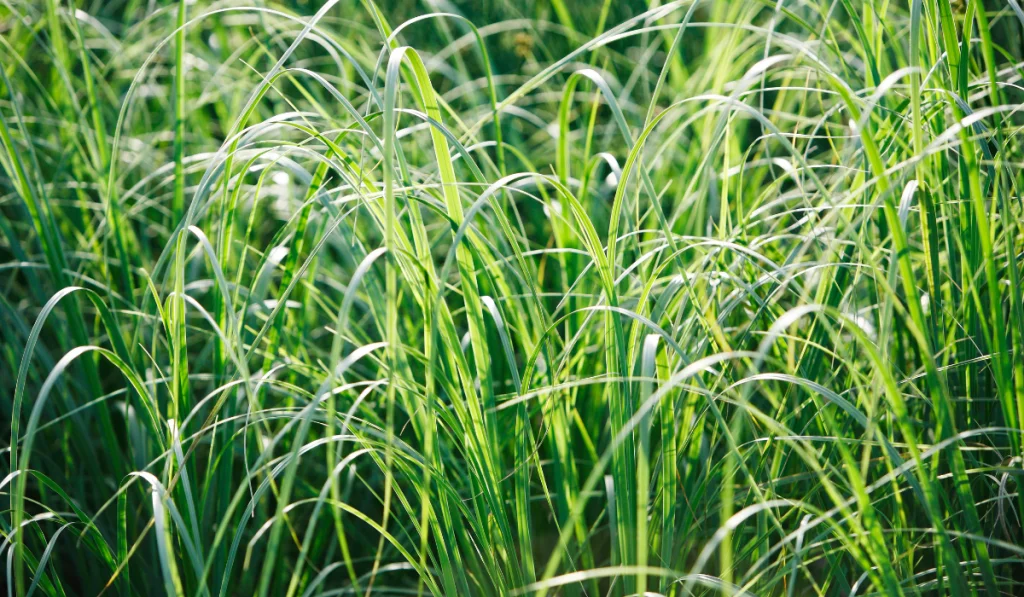
If the turf species above just don’t cut it for you, don’t worry! Not all hope is lost – and you don’t have to turn to xeriscaping to meet your landscaping needs.
Instead, you might want to consider growing tall or ornamental grass species. These are primarily used for ornamental purposes and aren’t meant to fully cover the lawn but instead to provide a decorative accent to small areas.
Some good options for the shade include:
- Blue grama grass
- Japanese forest grass
- Autumn moor grass
- Korean feather reed grass
- Little Miss Maiden grass
- Fall blooming reed grass
- Liriope
These ornamental grasses grow quickly and form arching clumps with elegant foliage – sometimes, it’s even variegated for additional interest and decorative appeal!
How Do I Grow Grass in Heavy Shade?
Before deciding which of these grass types to grow, be sure to do some research about which whether cool-season or warm-season turf grasses are right for you. The first step in growing a healthy lawn, after all, is choosing the right species of grass for the shaded areas of your lawn.
As a reminder, cool-season grasses perform best in areas with early spring and early fall temperatures between 65 and 80 degrees, while warm-season grasses grow best with temperatures ranging between 75 and 90 degrees during these times.
For the most part, cool-season grasses tend to tolerate heavy shade better than their warm-season counterparts, but there are lots of other variables to consider here. Ultimately, no grass type can tolerate shade 100% of the time. Remember, like all other plants, grass needs light to perform photosynthesis and survive!
In shady spots, it’s essential to manage your mowing properly. Regardless of the type of grass that grows in shade, leave the grass a bit taller when you mow so that it can absorb more sunlight. Remember, too, that taller grass blades are going to be more vulnerable to stress and fungus – so you should only cut the top third of the plant.
Even when you’re growing grass in the heavy shade, you still need to make sure you are watering appropriately. Grass in shady areas will stay moist because it’s not being exposed to the drying effects of the sun – so you’ll need less water.
If you’re overwatering, it will represent signs and symptoms like brown patches, slimy spots, or fungal growth.
Water in the morning – and less frequently. The only exception to this is when you are growing grass that is directly beneath a large tree, since the grass will need to compete with the tree roots for water along with oxygen and nutrients. You can always trim lower branches to let in more light, or just modify your watering strategy for grass not grown in full sunlight.
Finally, know that grass growing in low light conditions will likely need less nitrogen than the grass that is grown in sunny spots – but it might need more potassium. Nitrogen makes plants more succulent, which can weaken the blades and encourage fungal issues, while potassium boosts disease immunity and tolerance.
Of course, it’s always important to minimize the stress that’s done to your lawn – but this is especially true in shaded areas. One of the best ways to do this is to avoid parking vehicles on shady sections of the lawn and overseed regularly to keep your new lawn looking lush – no matter how much sun it does (or doesn’t) get.
Conclusion
Of course, you can always grow a combination of grass types, too. If your yard only has a few shady spots, don’t feel like you have to seed the entire thing with a shade-tolerant species.
Instead, choose a blend so that even if your non-shade tolerant species don’t perform well in the darker areas, shade-tolerant grasses will jump in and fill in any bald spots. You’ll still have a nice, uniform look when you choose shade tolerant species!
While you may not be able to change the location of your lawn, there are a few things you can do to make the most of the space you have. By considering these tips for growing the right grass in shade, you can help improve your lawn and make it as gorgeous as possible – even on the darkest days.
